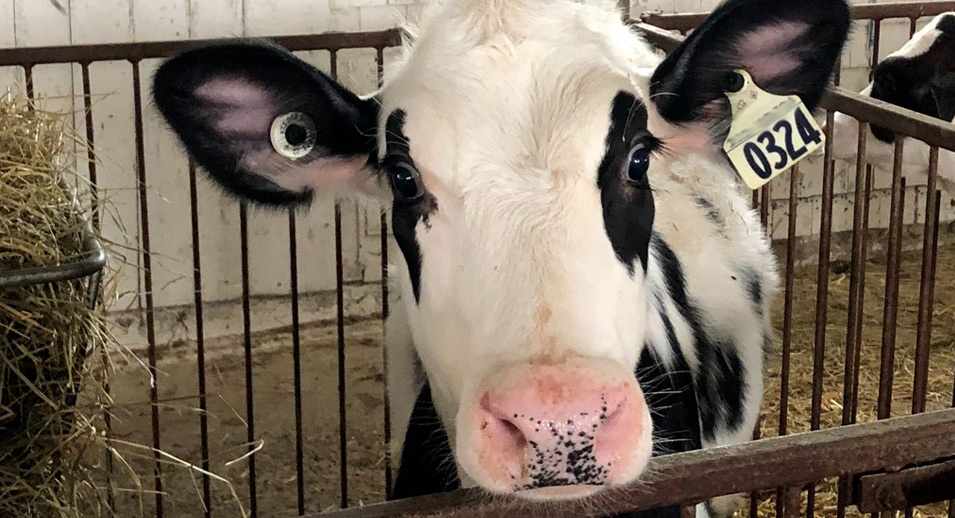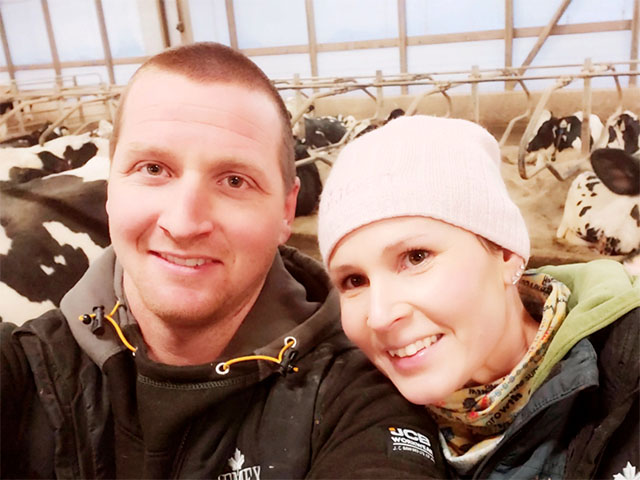Get Off to a Good Start: The Importance of the First Hours of Life
- September 27, 2021
Fall has arrived, bringing with it the greater number of calvings that often take place at this time of year. Unfortunately, environmental conditions in the fall contribute to issues with respiratory problems and diarrhea.

Respiratory problems are generally more prevalent in the fall and winter, whereas diarrhea is more prevalent in the winter. A heifer’s first hours of life can be a turning point for her future productive performance.
Colostrum: The Star of Your Calf Care Protocol
Those in the dairy industry have known for some time now that providing the proper quantity of good quality colostrum, in a timely manner, is key to having healthy calves. The antibodies found in colostrum will protect a newborn calf for its first few weeks of life until the immune system matures and can produce its own protective antibodies.
There are several factors which can cause the passive immunity transfer to fail and favorize the appearance of respiratory problems and diarrhea. These are known heifer raising issues and new research demonstrates why it is important to pay close attention to them.
Let’s quickly review the important concepts to consider at the beginning of life. A calf needs to ingest 300 g of antibodies (Godden, 2020). The higher the quality of the colostrum, the greater the chance that a calf will reach an adequate level of antibodies. This first drink corresponds to 10% of the calf’s weight and should be administered in the calf’s first 2 hours of life (maximum 6 hours) to ensure that it can be absorbed by the intestine and to minimize the risk of the colostrum being contaminated by microorganisms. The bacteria levels in the colostrum should be <100,000 cfu/ml total bacteria and <10,000 cfu/ml of coliforms.
|
Categories |
Target % of calves per category |
Brix Reading (%) |
|
Excellent |
> 40% |
> 24% |
|
Good |
~ 30% |
22-24% |
|
Average – OK |
~ 20% |
20-21% |
|
Poor |
< 10% |
< 20% |
Respiratory Problems
Respiratory problems are most likely to occur during temperature changes in the fall and winter. Heifers that have suffered from respiratory problems before weaning have 14% less chance of being inseminated or reaching first calving (Abuelo, 2021). They are 2.85 times more likely to die and 2.30 more likely to be removed from the herd before first calving (Buczinski, 2021). If they do make it through this selection to calving, they will be less productive in their first lactation by 120 to 525 kg of milk at 305 days of production, in accordance with the amplitude of the respiratory problems they experienced (Closs, 2017 – Buczinski 2021 & Dunn 2018). This certainly gives us something to consider when planning how to manage the parameters at the start of life and the environmental conditions of your farm.
Diarrhea
Diarrhea can be a major issue when it occurs on a dairy farm. In 1986, Walter-Toews mentions that heifers that have had an episode of diarrhea during the pre-weaning period are 2.86 times more likely to calve at over 30 months. More recently, Svensson & Hultgren (2008) mentions that the milk losses at 305 days will be around 344 kg. A similar number was brought to light in 2021 by Abuelo who reports losses of 325 kg of milk for the first lactation (305-day production). These animals will also require more breedings before becoming pregnant and will experience a decline in average daily weight gain of 50g/day. Renaud (2021) also arrived at a similar conclusion with 15 kg less weight at weaning for heifers that had had an episode of diarrhea. Once again, the longer the episode, the greater the impact.
The Impact of Calf Environment
In addition to good early life care, it is always important to look at environmental parameters. Cold temperatures that cause a calf to shiver will hinder their absorption of immunoglobulins. Winter ventilation should ensure four air changes per hour to adequately renew the air and expulse microbes and impurities. It is important to avoid drafts at calf level, characterized by a cold wind of more than 60ft/min (3 m/s) at 3-4 feet above the calves. (Source DairyLand Initiative).
With new research shedding light on the impact of pre-weaning state of health on the future performance of heifers, it is primordial to take the time to evaluate the methods and practices you apply in your business. Optimizing heifer raising practices will also optimize their performance and sustainability within the herd.
Need assistance? Your veterinarian or Lactanet advisor* (*available in Quebec and Atlantic Canada) can always help evaluate your business practices, herd performance, and your heifer raising environment. For more information, send your questions to louves@lactanet.ca.










